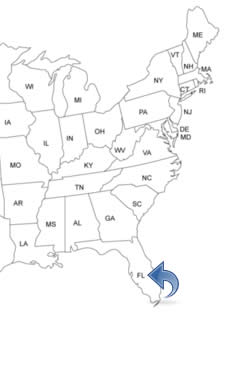FLORIDA PEOPLE SEARCH!
- ✔ Contact Info
- ✔ Phone Numbers
- ✔ Criminal Records
- ✔ Income Info
- ✔ Neighbors
- ✔ People's Age
- ✔ Property Ownership
- ✔ And Much More
Miami, Florida
Miami is located on the Atlantic coast in southeastern Florida and is the second largest city in the U.S. State of Florida. Forbes magazine ranked Miami "America's Cleanest City", for its clean drinking water, good air quality, vast green spaces, clean streets and recycling programs. Miami is a major center and a leader in commerce, culture, tourism, finance, media, entertainment, the arts and international trade. Downtown Miami is home to the largest concentration of international banks in the United States.
To See And To Do In Miami
- Frost Art Museum
- Ancient Spanish Monastery
- Miami Seaquarium
- Oleta River State Recreation Park
- Lowe Art Museum
- Star Island
- Aventura Mall
- Lincoln Road
- Collins Avenue
- South Beach Food Tour
- Port of Miami
- Miami Beach
- Downtown Miami Historic District
- Coconut Grove
History Of Miami - Timeline
In 1513, the first Europeans came to the Miami area. In 1566 the Spanish claimed the area around Miami. By 1570, they decided to look for more willing subjects outside of Florida and left Miami. In 1763, British forces took control over the area.
In 1800, the first permanent white settlers in the Miami area arrived. More settlers arrived in the early 19th century and again people came from Spain, and from Ireland, the Bahamas and from other parts of America. In 1825, the Cape Florida Lighthouse was built to warn passing ships of the dangerous reefs.
In 1830, Richard Fitzpatrick built a plantation with slave labor where he cultivated sugarcane, bananas, maize, and tropical fruit. In 1836, the Old Fort Dallas was established as a United States military post. In 1844 there were 96 residents living in the area. However, as late as the 1890s, only a handful of families made their homes in Miami. In 1870, William Brickell and his wife Mary built and operated a trading post and a post office where Miami is now located.In 1891, a wealthy Cleveland woman named Julia Tuttle purchased an enormous citrus plantation where the city of Miami is now located. Julia Tuttle wanted more people to live in Miami and gave the railroad owner Henry Flagler land for free to build hotels and a railroad station. Julia Tuttle is called the Mother of Miami and Henry Flagler are called the Father of Miami. In 1896, train service of the Florida East Coast Railway came to the area and Miami officially became a city in the summer of 1896. Thousands of people now moved to Miami.
Miami Beach was developed in 1913 when a two-mile wooden bridge built by John Collins was completed. The Collins Bridge crossed Biscayne Bay between Miami and Miami Beach and it was the longest wooden bridge in the world. In 1916, the businessman James Deering's "Villa Vizcaya" was completed.
In 1917, the Plymouth Congregational Church was completed. In 1920, there were 29,549 people living in Miami. The University of Miami was founded in 1925 and the Freedom Tower was built. The Dade County Courthouse was built in 1928. On February 15, 1933, an assassination attempt was made on Franklin Delano Roosevelt in Miami's Bayfront Park.Many middle class and upper-class Cubans moved to Miami during the Cuba revolution. In 1965, more than 100,000 Cubans came to Miami and the neighborhood "Little Havana" grew sharply. The rapid growth has made Miami to one of the most important financial centers in the United States. The city is a major center of commerce, finance, culture, tourism, and boasts a strong international business community.

